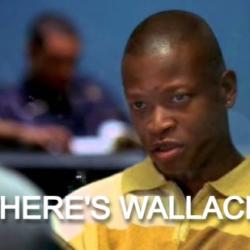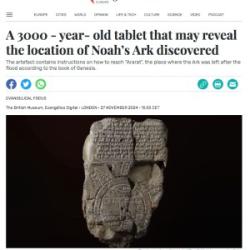The new semester starts this week. Let’s imagine you’re a TA for some freshman class in American history or sociology, something like that. Maybe poli sci, or government, or even American lit or American theology. Or maybe one of those first-year multidisciplinary orientation classes titled something like Human Diversity and American Culture.
Anyway, the professor likes to assign short essays on Day 1, just to gauge where her students are coming from. One of these assignments asks the new class to write a one-paragraph summary of race in America. This is, quite deliberately, a daunting assignment, with brevity forcing clarity (or exposing the lack thereof). But these micro-essays won’t affect students’ grades for the semester — the exercise isn’t to determine what students know, but what they will need to learn.
And but so, as the teaching assistant for the class, you’ve now got a pile of these papers in front of you and one of them reads something like this:
No individual, people, or nation is perfect. Among the most grievous sins committed by early Americans was the enslavement of and trafficking in Africans and African Americans. Slavery was formally abolished in 1865, but racism was not. Indeed, it was often institutionalized and in some ways heightened over time through Jim Crow legislation, de facto segregation, structural inequalities, and pervasively racist attitudes. And other persons of color, including Native Americans, Asian Americans, and Hispanic Americans, have often been subjected to official and unofficial discrimination. What we have seen in Charlottesville makes it clear once again that racism is not a thing of the past, something that brothers and sisters of color have been trying to tell [white Americans] for years.
That’s not bad. This student writes well. And, commendably, they demonstrate some understanding that racism involves more than just the past injustices of slavery and Jim Crow. The student is, perhaps, a bit overeager to come across as “woke,” but otherwise stands out as quite well-prepared to begin this class.
Now fast-forward to the end of the semester.
Now it’s the last week of classes, leading up to the final. This is when the professor reveals to her students that they will be asked to revisit the same series of micro-essays that they were asked to write back on the first day of class. The exercise is still, in part, for the professor’s benefit, again serving as a gauge for where students are at, but this time as an evaluation of how successful she and her class have been in communicating what the students need to know. Also, unlike that first round of essays, these will be graded.
In the stack of end-of-the-semester papers, you find a paragraph much like the one quoted above. (Not identical, mind you — the point of this little hypothetical is about the substance of this paragraph, not about detecting plagiarism.) At this point such a paragraph would seem a bit more disappointing. Where it might have shown great promise for an incoming student at the beginning of the semester, now — after all of the reading and lectures and discussions of the entire course — it fails to demonstrate the depth of understanding that one might expect or hope for after months of study.
Granted, the extreme focus required by the assignment is still deucedly tough. One paragraph seems cruelly inadequate for the subject at hand and, as a fair-minded TA, you’ll want to allow some leeway here for degree of difficulty. But this still doesn’t read like an A paper.
That initial apologetic need to convey that no nation is perfect — that racism did not end in 1865 and is not a thing of the past — might have seemed innocently naive at the start of the semester, but now it loses some of that innocence.

More troubling is the way the student doesn’t seem to have integrated the subject into their larger understanding of America. They seem to regard racism as a blot on the surface of the nation and its laws, history, culture, religion, politics, etc., rather than as an elemental, ontological aspect of the nation’s identity. They seem to think of America as something over here, intact and of itself, while racism is something else over there, something external and vestigial that occasionally, unfortunately, rubs up against American life. They recognize the possibility of structural racism as a problem requiring vigilance, rather than as an intrinsic reality. It seems, for them, to be a problem that America has, rather than an aspect of what America is.
The essay isn’t wrong, exactly, just somewhat inadequate. As the TA, you have to wonder if this student completed or comprehended all the required reading for this class. The student has, perhaps, observed those ideas, but hasn’t digested them.
So grade-wise I’m thinking, what? — a solid B, maybe? B-minus?* And definitely some longish notes in the margins on what they’ll need to improve on if they want to do better than that on the final.
The punchline here, as you may have already realized, is that this is not a hypothetical paragraph and it was not written by a freshman student. It is, rather, from another of those generally commendable public statements and mass-signatory open letters produced in the wake of the most recent white supremacist violence in Charlottesville. Specifically, it’s from “An Open Letter From Christian Scholars on Racism in America Today.”
I have great respect and personal fondness for many of the good people who signed onto this. (It’s certainly not that I disrespect or dislike the others, it’s just that I don’t know many of these names.) The invitation to endorse it was somewhat binary and, given that, I think they were right to lend their weight to its side of the scale. I think the statement itself and its endorsement by these many scholars is, on balance, a Good Thing.
But I also suspect — or, at least, hope — that many of them would agree with me about the grade its description of the problem would merit if it were submitted as an essay in any of their classes. I suspect that many would agree that this statement fails to adequately grasp the breadth and depth and pervasive, enduring scope of the matter. Others perhaps would not agree.
The apparent (white) freshman-level understanding reflected in the paragraph I’ve quoted may be partly due to the unfortunate “dumbing-down” that scholars sometimes think they need to do to communicate to a broader, popular audience of non-specialists. It may be partly due, as we’ve already said, to the extreme difficulty of cramming all that needs to be expressed into a single paragraph on short notice.
But I think it’s also partly also an accurate measure of where this group of students is at here at the beginning of a new semester.
This shows these kids have great promise and admirable intentions. But it also shows that they have a lot to learn and to absorb in the months and years ahead.
– – – – – – – – – – –
* Again, though, the paragraph is clearly written with well-constructed sentences. If you’ve ever really been a TA slogging through an actual stack of student papers — many of which are, alas, not so clearly or coherently written — then you’re likely aware of the halo effect that provides, and how it means that this paper would likely get a higher grade than it might otherwise receive if it were read in isolation, just due to your sense of gratitude over not having to struggle to comprehend what it was attempting to say.












